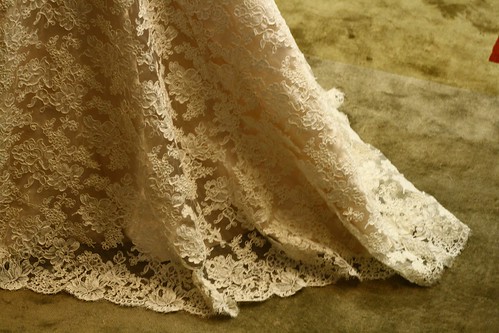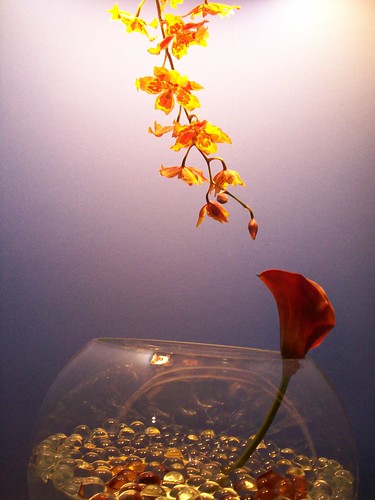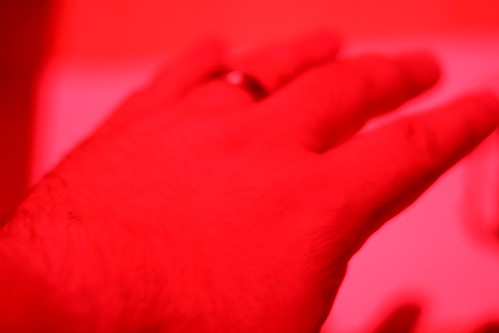So as I've covered before, color temperature, based on where you set it, subtracts a particular range of color from a picture. It can be used for a subtle effect, like this:
A nice before and after here:
In this first photo, the flowers were lit under an incandescent source, but because of the blue, it cooled it down a bit. AWB did okay and relatively true to what is there. I was more fascinated with-in person- ho vibrantly orange and yellow those flowers were...so did get a more accurate image of my impression, I kicked up the white balance to 5200k. Look at how much of the blue it removes and how much more warm and saturated some of those tones become.
You can take this to other fun extremes. Let's try this as our WB.
That is some R91 gel shot onto some white paper with a 3200k white balance preset. What do you think will happen? If we remember our color wheel, by eliminating this, it will enhance the inverse:
If we go the other way and white balance to this (R26 gel with a 3200k WB preset):
Yields the ability to shoot in SNAKE-O-VISION!!!:
It allows for some fun gimmicks, but really is useful. One trick that I use a lot in broadcast applications, is to color my lights to the host. We will chip our cameras (an oversimplification, but basically making sure all of our cameras match and are at a consistent balance), tweak their settings to how I have it lit (lets say primarily 3200k) and get ready to shoot. If, however, I know that our host has a very slight blue-ish cast to their skin, I'll add a touch of 1/8 CTO to their light. It will help to very subtlely counteract that cast to their skin. It's particularly helpful if someone has a very slight greenish cast to their skin-a little pink instantly helps their complexion. By doing it with the lighting, it means not having to recalibrate your camera with every person it points at.







No comments:
Post a Comment